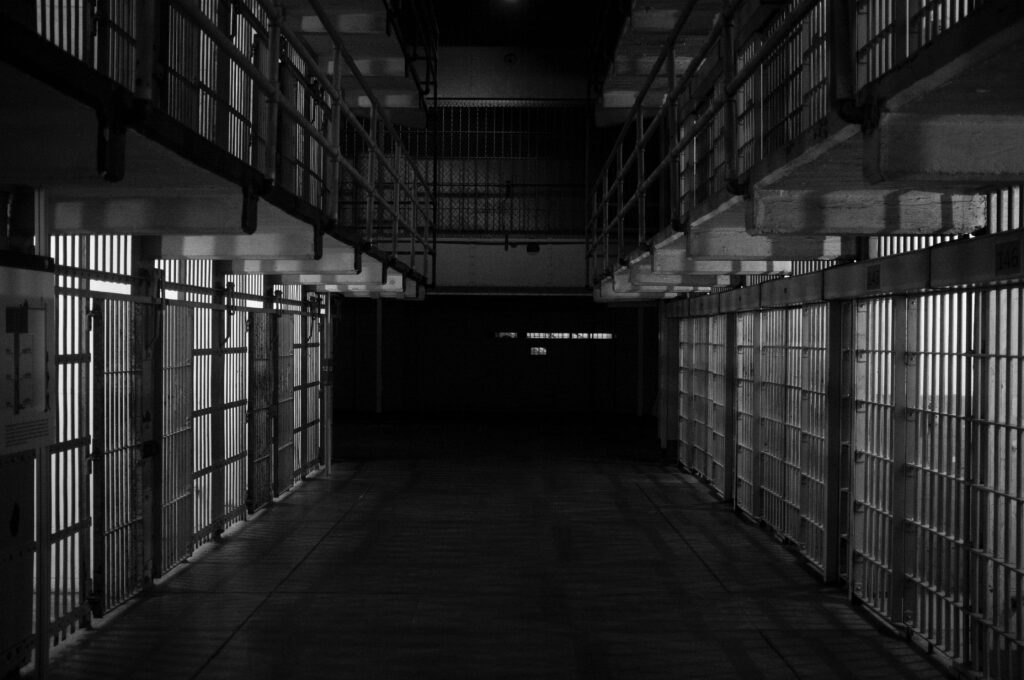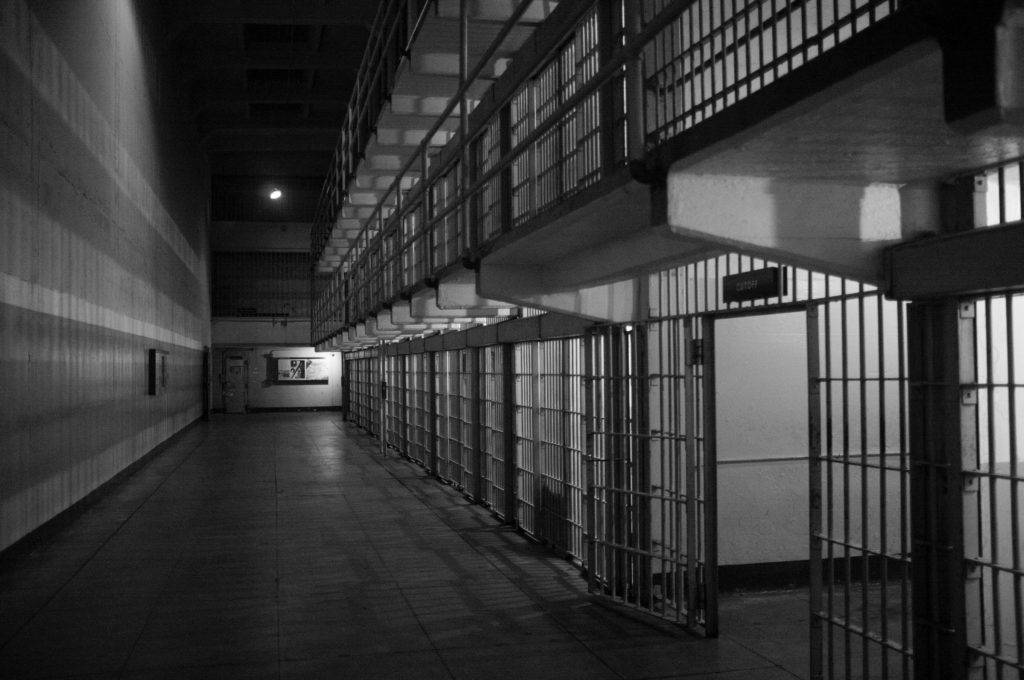By Alex Gracia
As of September 16, 2024, indigent prisoner-plaintiffs in North Carolina must be weary when their civil rights claims are dismissed.[1] The failure to do so could result in the loss of important financial protections afforded to them.[2]
Background
The Federal Reserve reports that 37% of all adults would not be able to cover a $400 emergency expense with cash or its equivalent.[3] While some of those people could pay using another method, 13% of all adults cannot afford the emergency expense “by any means.”[4] To initiate a lawsuit in a federal district court, prospective plaintiffs must pay fees totaling $402,[5] which can pose an insurmountable financial burden to filing suit in federal court. This $402 fee is made up of a $350 statutory filing fee,[6] and an additional $52 miscellaneous fee “[f]or filing any document that is not related to a pending case or proceeding.”[7] With these conditions in place, it can be difficult for indigent plaintiffs to seek justice for their injuries.[8] This is especially true for prisoners who want to bring claims against prison officials. Among prisoners, 57% of men and 72% of women were considered in poverty before they were arrested.[9]
Luckily, the common law has a rich history of allowing indigent plaintiffs to bring their claims in forma pauperis (IFP), which allows them to avoid prepaying court fees.[10] The IFP doctrine was formalized by Congress in 1892,[11] and is today codified as 28 U.S.C. § 1915.[12] The statute permits a federal court to authorize proceeding IFP when a litigant offers a good faith affidavit stating “that the person is unable to pay” prefiling fees.[13]
However, Congress noticed that there were too many meritless suits being brought IFP by prisoners in the federal courts.[14] As stated by the Supreme Court, “[w]hat this country needs, Congress decided, is fewer and better prisoner suits.”[15] To meet that end, Congress enacted the Prison Litigation Reform Act of 1995 (PLRA).[16] Among other things, the PLRA sought to reduce frivolous prisoner litigation by introducing a “three-strike rule,” which bars a prisoner from proceeding IFP if they have “on 3 or more prior occasions, while incarcerated or detained in any facility, brought an action or appeal . . . that was dismissed on the grounds that it [was] frivolous, malicious, or fail[ed] to state a claim upon which relief may be granted . . . .”[17] Thus, after three “strikes,” a prisoner loses their ability to proceed IFP, which could mean that they are “out” of federal court.[18]
Heck Dismissals
When a prisoner believes that their rights have been violated by a prison official, they may choose to bring a “civil action for deprivation of rights,” under 42 U.S.C. § 1983.[19] If their § 1983 suit is successful, a prisoner can secure monetary damages or other equitable relief.[20]
There is a wrinkle, however. Sometimes, prisoners bring claims that, if successful, would undermine the legality of their imprisonment in the first place.[21] The Supreme Court dealt with this problem in Heck v. Humphrey.[22] In Heck, a prisoner brought a § 1983 claim against prosecutors and investigators for unlawful investigation, destroying exculpatory evidence, and using illegal voice identification procedures at trial.[23] The district court found that the prisoner’s claim called into question the validity of his imprisonment, so it dismissed his complaint without prejudice.[24] The Seventh Circuit affirmed the district court’s decision by finding that a § 1983 action that calls into question the legality of the conviction is more properly characterized as an application for habeas corpus, which requires all state remedies to be exhausted before it can be heard.[25]
When Heck reached the Supreme Court, the Court held that for a § 1983 claim to be cognizable, the plaintiff must show that his or her conviction has been reversed, expunged, invalidated, or questioned.[26] The Court found that, when evaluating a prisoner’s §1983 claims, courts must “consider whether a judgment in favor of the plaintiff would necessarily imply the validity of his conviction or sentence; if it would, the complaint must be dismissed . . . .”[27] This requirement became known as the “favorable termination” requirement.[28]
Heck Dismissals and PLRA Strikes
Does a dismissal under Heck give a prisoner-plaintiff a PLRA strike? The Supreme Court has declined to specify,[29] and the circuit courts are now split on the question.[30] The Third, Fifth, Tenth, and D.C. Circuits have held that a Heck dismissal qualifies as a dismissal for failure to state a claim because the favorable termination requirement is effectively an element of a § 1983 claim.[31] On the other hand, the Second, Seventh, and Ninth Circuits have taken the alternate position that a Heck dismissal is sometimes, but not always, a strike.[32]
Relevant for North Carolinian prisoners, the Fourth Circuit picked a side of the split in September 2024.[33] In Brunson v. Stein, Brunson was imprisoned after being convicted of a sexual-abuse offense.[34] He had “previously filed four § 1983 suits that were all dismissed under Heck.”[35] The district court concluded that the Heck dismissals were for failure to state a claim upon which relief can be granted, so Brunson had more than three PLRA strikes on his record.[36] Thus, it did not authorize Brunson to proceed IFP.[37] After paying the $402, Brunson’s case proceeded as normal and the district court dismissed his claim.[38] When Brunson appealed his claim, he applied to forgo prepaying fees by arguing that Heck dismissals were not strikes under the PLRA.[39]
The Fourth Circuit held that “a dismissal under Heck is necessarily a dismissal for ‘failure to state a claim upon which relief may be granted’ and qualifies as a PLRA strike.”[40] It considered the language of Heck’s holding: “a § 1983 plaintiff must prove that the conviction or sentence has been . . . invalidated.”[41] If a prisoner-plaintiff’s claim invokes Heck, they must show that their conviction has been invalidated or face dismissal.[42] Without showing favorable termination, the court reasoned, an element of the claim must be missing.[43] In other words, the complaint has failed to state a claim upon which relief can be granted.[44] Because this type of dismissal is a PLRA strike,[45] Brunson’s four previous Heck dismissals disqualified him from proceeding IFP.[46]
The consequences of Brunson could be drastic for indigent prisoners in North Carolina and the greater Fourth Circuit. What could be perceived as a “flood of nonmeritorious claims,”[47] from prisoners could also reasonably be perceived as the natural effect of the high quantity of pro se plaintiffs in prisons. For more than twenty years, over 90% of prisoner civil rights or conditions claims were brought by prisoners pro se.[48] With very little legal training or experience, many indigent prisoners may bring claims when they perceive a violation of their rights without understanding the procedural intricacies of habeas corpus petitions or 42. U.S.C. § 1983 claims.[49] After repeated attempts, they may be forced to pay or strike themselves out of federal court.[50]
Interestingly, a solution may already be found within the text of the federal IFP statute.[51] It states that “[t]he court may request an attorney to represent any person unable to afford counsel.”[52] With court-appointed counsel, prisoner-plaintiffs may have better luck proceeding IFP in their attempts to redress their grievances with prison and state officials. Still, for whatever reason, most prisoners proceed pro se.[53] With that being the case, indigent prisoner-plaintiffs in North Carolina must tread carefully around the new IFP landscape established by Brunson.
[1] See Brunson v. Stein, 116 F.4th 301 (4th Cir. 2024).
[2] Id.
[3] Bd. of Governors of the Fed. Rsrv. Sys., Economic Well-Being of U.S. Households in 2023 33 (2024), https://www.federalreserve.gov/publications/files/2023-report-economic-well-being-us-households-202405.pdf.
[4] Id. at 32.
[5] See Brunson, 116 F.4th at 305.
[6] 28 U.S.C. § 1914(a).
[7] District Court Miscellaneous Fee Schedule, U.S. Cts., (Dec. 1, 2023), https://www.uscourts.gov/services-forms/fees/district-court-miscellaneous-fee-schedule.
[8] See Rosa v. Doe, 86 F.4th 1001, 1003–4 (2d Cir. 2023) (noting that these conditions existed in 2022).
[9] Bernadette Rabuy & Daniel Kopf, Prisons of Poverty: Uncovering the Pre-incarceration Incomes of the Imprisoned, Prison Policy Initiative (July 9, 2015), https://www.prisonpolicy.org/reports/income.html.
[10] See Rosa, 86 F.4th at 1004 (describing the in forma pauperis tradition existing as early as 1295 in English ecclesiastical courts).
[11] Act of July 20, 1892, ch. 209, 27 Stat. 252.
[12] See Rosa, 86 F.4th at 1005.
[13] 28 U.S.C. § 1915(a).
[14] See Jones v. Bock, 549 U.S. 199, 203 (2007).
[15] Id. (citing Porter v. Nussle, 534 U.S. 516, 524 (2002)).
[16] Prison Litigation Reform Act of 1995, Pub. L. No. 104-134, 110 Stat. 1321.
[17] 28 U.S.C. § 1915(g).
[18] See id.
[19] 42 U.S.C. § 1983.
[20] See id. (“Every person who . . . subjects, or causes to be subjected, any citizen of the United States or other person . . . to the deprivation of any rights . . . shall be liable to the party injured in an action at law, suit in equity, or other proper proceeding for redress . . . .”).
[21] See Heck v. Humphrey, 512 U.S. 477, 483 (1994).
[22] Id.
[23] See id. at 479.
[24] See id.
[25] See id. at 479–80.
[26] See id. at 486–87.
[27] Id. at 487.
[28] Id. at 492 (Souter, J., concurring).
[29] See Lomax v. Ortiz-Marquez, 140 S. Ct. 1721, 1724 n.2 (2020) (declining to address the question).
[30] See Brunson v. Stein, 116 F.4th 301, 305–06 (discussing the “entrenched circuit split” on the issue).
[31] See, e.g., Garrett v. Murphy, 17 F.4th 419, 427 (3d Cir. 2021); Colvin v. LeBlanc, 2 F.4th 494, 499 (5th Cir. 2021); Smith v. Veterans Admin., 636 F.3d 1306, 1311–12 (10th Cir. 2011); In re Jones, 652 F.3d 36, 38 (D.C. Cir. 2011).
[32] See, e.g., Cotton v. Noeth, 96 F.4th 249, 257 (2d Cir. 2024); Polzin v. Gage, 636 F.3d 834, 838 (7th Cir. 2011); Washington v. L.A. Cnty. Sheriff’s Dep’t, 833 F.3d 1048, 1056 (9th Cir. 2016).
[33] See Brunson v. Stein, 116 F.4th 301 (4th Cir. 2024).
[34] See id. at 304.
[35] Id.
[36] See id. at 304–05.
[37] See id.
[38] See id. at 305.
[39] See id.
[40] Id. at 306.
[41] Id. (quoting Heck v. Humphrey, 512 U.S. 477, 486–87 (1994)).
[42]See Heck, 512 U.S. at 486–87.
[43]See Brunson, 116 F.4th at 307.
[44]See id.
[45]See 28 U.S.C. § 1915(g).
[46]See id. at 309.
[47] Jones v. Bock, 549 U.S. 199, 203 (2007).
[48] Margo Schlanger, Prison and Jail Civil Rights/Conditions Cases: Longitudinal Statistics, 1970-2021, U. of Mich. L. Sch., Pub. L. & Legal Theory Research Paper Series, April 2022 4, https://ssrn.com/abstract=4085142.
[49] See Margo Schlanger, Trends in Prisoner Litigation, as the PLRA Enters Adulthood, 5 U.C. Irvine L. rev. 153, 153–54 (2015) (“The PLRA conditioned court access on prisoners’ meticulously correct prior use of onerous and error-inviting prison grievance procedures.”).
[50] See id. at 155.
[51] 28 U.S.C. § 1915(e)(1).
[52] Id.
[53] See Schlanger, supra note 48, at 4.





